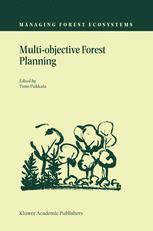

Most ebook files are in PDF format, so you can easily read them using various software such as Foxit Reader or directly on the Google Chrome browser.
Some ebook files are released by publishers in other formats such as .awz, .mobi, .epub, .fb2, etc. You may need to install specific software to read these formats on mobile/PC, such as Calibre.
Please read the tutorial at this link: https://ebookbell.com/faq
We offer FREE conversion to the popular formats you request; however, this may take some time. Therefore, right after payment, please email us, and we will try to provide the service as quickly as possible.
For some exceptional file formats or broken links (if any), please refrain from opening any disputes. Instead, email us first, and we will try to assist within a maximum of 6 hours.
EbookBell Team

0.0
0 reviewsMost of the scientific methods devised for forest planning support timber production ignoring the existence of forest functions other than wood production. Fortunately, the realisation that the forest planning methods available today do not correspond to the needs of today's forestry has activated forest researchers to develop and adopt new methodologies and approaches, which are specifically aimed at multi-objective situations. This book is about the quantitative approach to multi-objective forest planning. The emphasis is on topics that are rather new and not yet systematically applied in forest planning practice. The topics and methodologies discussed in this book include: measurement of preferences, multiple criteria decision analysis, use of GIS to support multi-objective forest management, heuristic optimization, spatial optimisation, and the measurement of non-wood forest outputs. By reading the book, a planning specialist, student or a researcher will get an insight into some of the current developments in forest planning research.